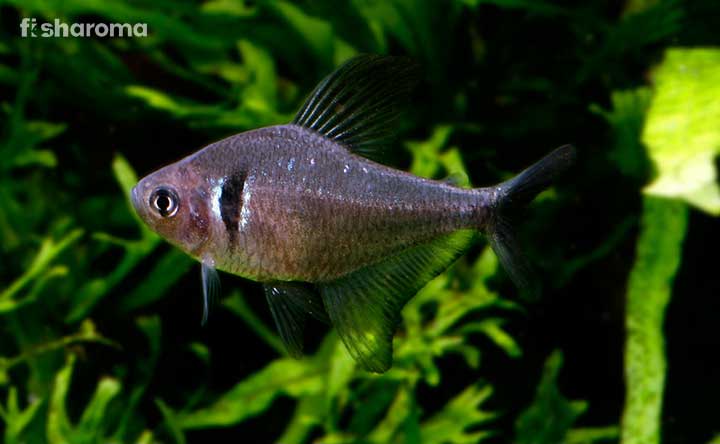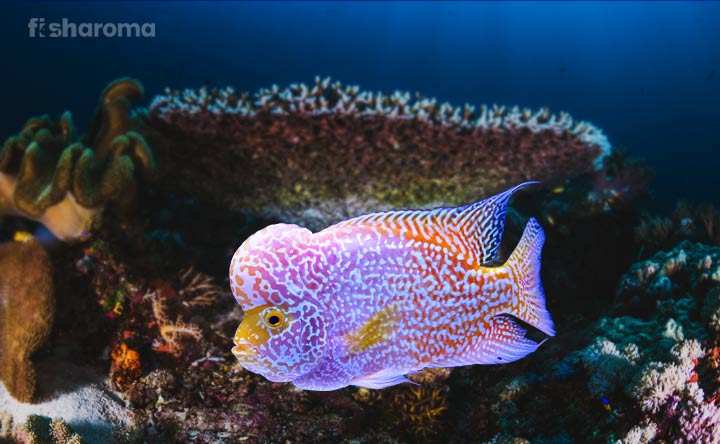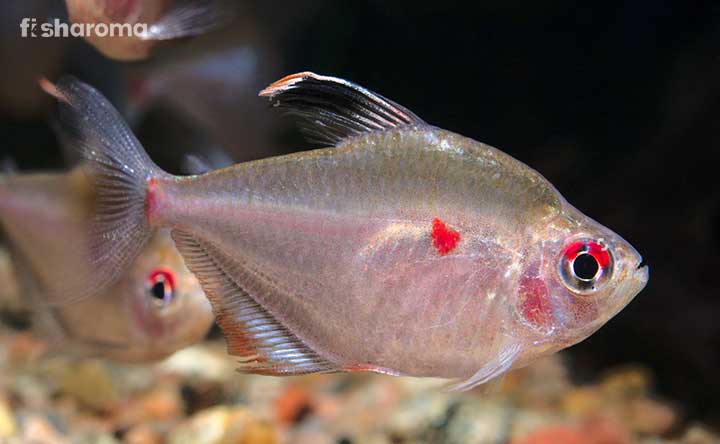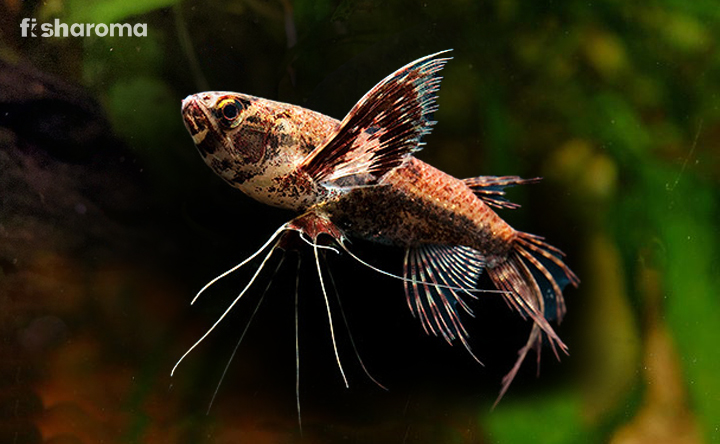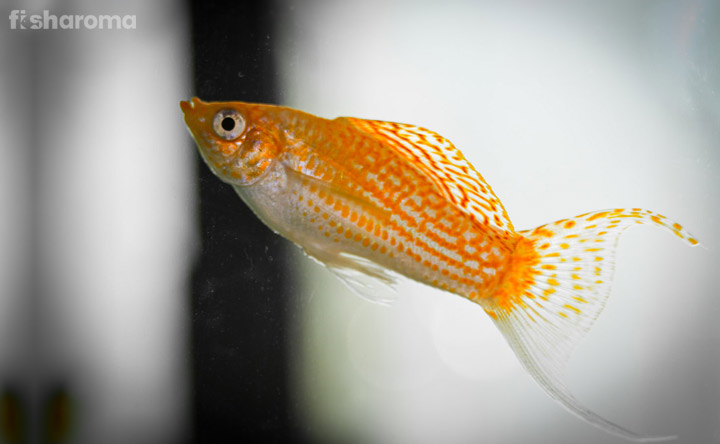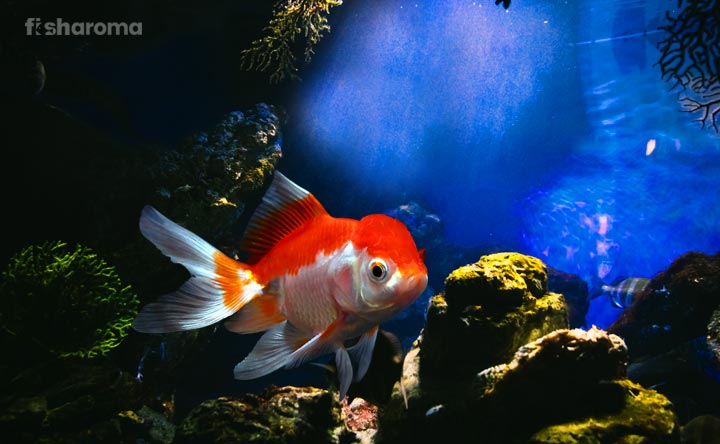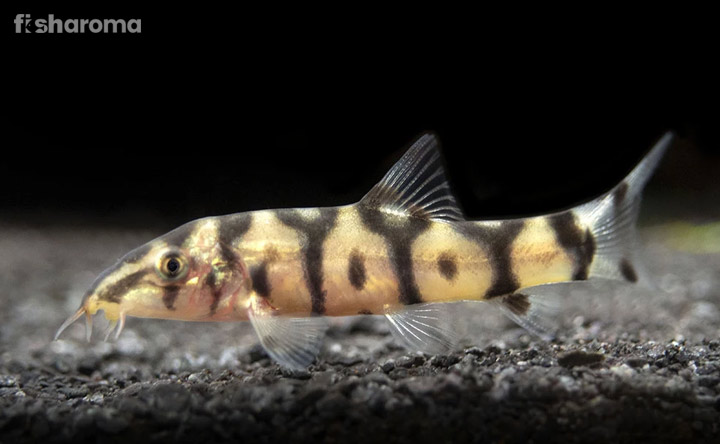Tiger Barb Care Guide: A Playful Species for Your Freshwater Tank
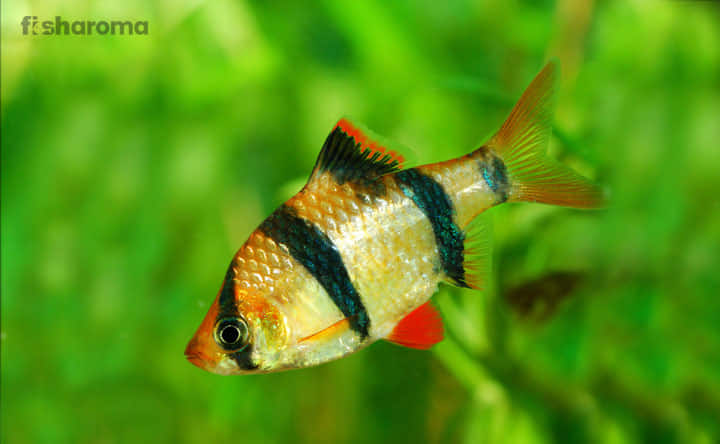
With behaviors as vivid as their appearance, it is no wonder why Tiger Barbs are one of the most preferred freshwater species among aquarists. These little active beasts are a delight to watch when a school of them move in a synchronized fashion in your aquarium. They are highly social by nature which makes them a perfect candidate for community tanks as well.
Sounds like a pet you want to rear at home? Well, you have just landed yourself in the right place then. We are providing a comprehensive analysis of their life and a care guide that will help you treat them healthily.
Key Specifications of Tiger Barb
Take a quick glance at some of the key specifications of Tiger Barb before getting to know it in detail.
| Scientific Name | Puntigrus tetrazona |
| Family | Cyprinidae |
| Origin | Asia |
| Size | 2-3” (5.0-7.6 cm) |
| Color | Gold/silver with black bands |
| Care Level | Easy to moderate |
| Lifespan | 5-7 Years |
| Temperament | Semi-aggressive |
| Compatibility | Moderate |
| Tank Size | 20-Gallons |
| Diet | Omnivore |
Overview
Belonging to the family of Cyprinidae, Tiger Barbs are known for their striking appearances and eccentric personalities. They derive their name from the close resemblance that they share in their appearance with a tiger. They are suited for aquarists of varying experience levels.
These freshwater species were initially described as Barbus tetrazona, but are now scientifically called Puntius tetrazona. In addition, they are also known by various other common names including Partbelt Barb, Tirger, Sumatra Barb, and Sumatranus.
Origin & Habitat of Tiger Barb
Having their origin in Asia, Tiger Barbs are native to the island of Borneo. They are also found in Sumatra, Thailand, Cambodia, and throughout the Mala Peninsula. Besides, they can be seen in the Malaysian state of Kalimantan and Sarawak as well as in Indonesia. In addition, feral populations of this species have also been seen in Australia, Singapore, Colombia, Puerto Rico, and the United States.
In the wild, they mostly inhabit quiet forest swamps, lakes, tributaries, and streams that have highly-oxygenated water. There is also an abundance of rocks and vegetation in their vicinity. Although they prefer shallow waters, they can be seen at different depths of a water body.
It should be remembered that Tiger Barbs are generally farm-bred and not caught in the wild.
Appearance of Tiger Barb
Tiger Barbs have a deep, round body along with a pointed head and a high back. Their wide-flared bodies are shaped like a barb or a spear point that has triangular snouts.
Sexual dimorphism is pretty apparent in them. Females are a bit larger than their male counterparts. Their bodies are also rounder than males.
Size of Tiger Barb
Tiger Barbs are the largest ‘banded barbs’ in the world. That being said, when you compare to most other aquarium fish, they will definitely be categorized under the small fish type. They grow up to2-3” (5.0-7.6 cm).
Color of Tiger Barb
Females are less colorful and usually have fewer patterns than males. As we have stated above, they are named after the animal that they most resemblance appearance-wise. Similar to a tiger, these freshwater species have a golden yellow body along with four prominent black bands.
Their snouts and fins have bright orange markings on them. Due to advancements in breeding, many color forms of this species exist today. Their scales can be of red, gold, green, or pale silver in color. The solid black bands are sometimes replaced with broken bands in some variants. In fact, few variants don’t have any bands at all.
A rare albino variant also exists that has white bands instead of black bands and has pale cream-colored skin.
Behavior of Tiger Barb
Tiger Barbs have a dominant personality that tends to be on an aggressive end. Although they are known for pushing, bumping, or even biting their tankmates, their behavior is considered more annoying than harmful.
Extremely competitive by nature, they are infamous for forming small hierarchies, where it will be easier for them to compete for dominance. Never shy from putting a show, you will see them out in the open almost always since they are not too much into retreating or hiding. They can be seen in the tank chasing and nipping one another.
Since they are schooling fish, it is advised to keep them in groups, since it will help them stay less stressed and timid. They are highly active and fast swimmers.
Lifespan of Tiger Barb
Tigers Barbs can live anywhere up to 5-7 years as long as the right tank conditions are provided and nutrient foods are provided to them.
Diet of Tiger Barb
Omnivorous by nature, Tiger Barbs are not that fussy-eaters and will openly accept different types of food, including live, frozen, freeze-dried, flake foods, among others. The quantity of food that you provide will depend on the number of times you fed them in a day. For example, if you are feeding them only once a day, provide them that much amount of food which they can consume within five minutes. Else, if you are feeding them twice a day, then you need to provide them that much food that they can consume within three minutes.
An ideal diet of a Tiger Barb should consist of the following items:
- Boiled Zucchini
- Boiled Lettuce
- Daphnia
- Brine Shrimp (Live, frozen, freeze-dried)
- Bloodworm (Live, frozen, freeze-dried)
- Beef Heart (Live, frozen, freeze-dried)
For a daily food choice, we recommend the vegetable-based food Omega One Veggie Rounds. For occasional treats, you can feed them the following:
- Omega One Freeze Dried Brine Shrimp
- Hikari Bio-Pure Freeze Dried Daphnia for Pets
- Omega One Freeze Dried Blood Worms
Tank Requirements for Tiger Barb
The tank that you keep your Tiger Barbs in will serve as their home. A home aquarium can never give your pet the same amount of freedom as of the wild. But still, the least that you can do is to make it resemble as much like their natural habitat as possible so that they feel at home. To help do that, we are listing out the factors you need to bear in mind for setting up their tank.
Tank Size
Despite their small size, you would need a moderate-sized tank for Tiger Barb the cater to their social nature. Keeping them in groups of at least five is advised, and for hosting five Tiger Barbs together, you would require a 20-gallon tank.
For each additional Barb you add, you need to add 3 gallons of space to the tank. This means if you are adding four more Barbs, then you would need a 32-gallon tank.
Tank Lid
Their highly-active lifestyle propels them to sometimes make leaps out of the tank. So, needless to say, you would need a firm tank lid for your aquarium.
Substrate
When it comes to the substrate, go for fine gravels, along with large rocks. You may also pick a sandy substrate for these mischievous freshwater species.
Filter
Fix an under-gravel or low-flow filter in the tank where you host your Tiger Barb since it will help mimic the water currents your fish experience in their natural habitat.
Nature of Lighting
These fish can survive in both high and low-light settings. As such, you can go creative with the kind of light you want to display in your tank.
Presence of Flora
Aquatic plants play a significant role in the lives of Tiger Barb. From providing shelter to serving as their breeding ground, from replicating their natural habitat to supplementing food source, they do it all. Therefore, you can definitely include plants in a Tiger Barb tank. Having said that, don’t overcrowd the tank since these fish love an open space for swimming.
Try to place the plants at the corners and sides of the tank and leave the center free for swimming. You also need to ensure that the plants grow up to the middle level of your tank water.
Water Wisteria and Java Fern are ideal options for keeping with them since they don’t need any specialized lighting conditions and also because they are compatible with both Tiger Barbs and their tankmates. Dwarf Hairgrass is another good option, especially for lining up the substrate in the breeding tank of a Tiger Barb.
Ornaments
When it comes to aquarium décor, make sure you don’t clutter the free space of your tank. Small floating driftwood and bogwood will obviously be appreciated by Barbs, but an abundance of castles, caves, and large rocks might make them claustrophobic.
However, remember juvenile Tiger Barbs may require hiding spots to escape the aggression of their adult counterparts. So, don’t just eliminate all the caves and shelters from your tank altogether.
Cleaning Method
Cleaning your tank on a regular basis is extremely important for maintaining the well-being of your Tiger Barb. Ideally, thoroughly cleaning the tank once a month gets the job done.
To do it, you need to first empty your tank by transferring the water and your Barbs to a bucket or another tank, if you have a spare one. You then need to take out the ornaments and put them under running water and suction or vacuum the substrate.
Scrape off the algae on the wall and wipe the interiors of the wall with a soft cloth dipped in lukewarm water. Avoid using soap or any other chemical-based products for cleaning purposes.
Your cleaning process also includes regular trimming of the aquatic plants in order to prevent them from going wild and blocking the free and open area of swimming for your freshwater pet.
Water Type for Tiger Barb
Providing the right water conditions will only add years to your Tiger Barb. Take a look at the parameters you need to maintain in a Tiger Barb tank.
Temperature
Being the tropical species that they are, slightly warm water works for them. Thus, try to keep the temperature of the tank water in the range of 75-80° F (23-27° C).
pH Level
Tiger Barbs prefer slightly acidic to neutral water. Thus, try to keep the pH level of your tank between 6-7.
Hardness
The general hardness of the tank water that hosts this species should be 10 dGH.
Replacement Procedure
Water replacement is an integral part of fishkeeping and one that you need to do on a regular basis. Not only will it help in keeping the water clear, thereby giving clear visibility and display, but it will also help your pet live a healthy life.
Moreover, nitrate, phosphates, and decomposing organic matter builds up in your tank due to evaporation that makes your water hard. So, replacing the water is crucial for the safety of your aquatic pets and plants.
In this regard, you first need to decide at which interval you want to replace water. If you want to do it on a weekly basis, then replace 10% of the tank water. If you want to do it every 15 days, then you need to replace 20% of the tank water. Else, if you want to do it on a monthly basis, then you should replace 40% of the tank water.
Remember, the new batch of water that you add to your tank should have the same temperature, pH level, and general hardness as that of the existing batch of water. In addition, never replace the entire water content of your tank altogether unless it is infected or in a completely dire situation because it might kill the beneficial bacteria in your tank.
Compatibility of Tiger Barb
If you keep a Tiger Barb alone, it will tend to become more reclusive, skittish, and even stressed. It is advised to keep them in groups of 8-12 since when you keep them in less than the said number; they will display aggressiveness, thereby living a stressed, and in turn, an unhealthy life.
Suitable Tankmates for Tiger Barb
Tiger Barbs make for great companions in a community tank. To start with, they definitely bode well with other Barb species. Outside the Barbs, we advise you to keep them with fast-moving species that have short fins.
Another aspect that you should keep in mind is that they should never be the first one to be put in a tank. This means that you should always introduce your Tiger Barbs in a pre-established tank rather than adding other species to a Tiger Barb tank. This would ensure that the Tiger Barbs are not aggressively dominant to others. When Tiger Barbs are introduced first to the tank, they see other species as intruders.
With all that being said, the suitable tankmates of a Tiger Barb are as follows:
- Rosy Barb
- Tinfoil Barb
- Cherry Barb
- Five-banded Barb
- Six-banded Barb
- Black Ruby Barb
- Bristlenose Pleco
- Tetra
- Danio
- Platy
- Corydoras Catfish
- Pictus Catfish
Even when you keep Tiger Barb with other species, make sure that there are 8-12 Tiger Barbs together so that they keep it to themselves and not harass other species.
Unsuitable Tankmates for Tiger Barb
Never keep Tiger Barbs with aggressive species, especially those whose aggression level is higher than them. In addition, also avoid keeping them with fish that have long-flowing or ornamental fins since Tiger Barbs are known to nip them.
Furthermore, extremely docile and slow-moving fish should also be avoided because they might get stressed by the highly energetic, fast-paced swimming habits of Tiger Barbs. Small invertebrates should also be not kept with them since Tiger Barbs might harass them.
Therefore, the unsuitable tankmates of Tiger Barbs are as follows:
Breeding of Tiger Barb
One of the most intriguing aspects of their breeding is that they temporarily-paired spawners, meaning Tiger Barbs choose a different mate each time they spawn. They reach their maturity at the age of 6-7 weeks and continue spawning multiple times throughout their lives.
It is important to condition the male and female separately before pairing them off. Females should be kept in a large, marble-substrate tank where the water is soft acidic with a pH level of 6.5 and a general hardness of 10 dGH. The temperature of the water should be 80° F (27° C). To facilitate breeding, you need to feed them three times a day and provide them protein-rich food such as adult Brine Shrimp and Freeze-Dried Bloodworms. Ensure that you replace 30% of the water daily.
You need to introduce the female first to the breeding tank and add in the male a couple of days later. During breeding, males display more intense colors and females become rounder and larger.
These egg-scattering species spawn in the substrate under the shelter of submerged vegetation. Your breeding tank must have thick vegetation in the form of grasses and reeds. They will serve as excellent hiding spots for them as well. Placing marbles and cobbles also helps in the spawning process since this is where the transparent yellowish eggs will land on. Once the female lays the eggs, the male starts fertilizing them.
Spawning usually takes place in the morning. If you see the pair not spawning in a day or two, try increasing the temperature of the water by a degree or two to encourage breeding.
Use an aquarium heater to maintain the optimal water temperature in the breeding tank.
Remove the parents from the breeding tank once the eggs have been laid and fertilized in order to avoid cannibalism of the eggs by them.
Usually, the eggs hatch in 48 hours and the fries retain themselves in the yolk sac for the next 3-5 days. After the yolk sac is lost, you need to feed the fries Brine Shrimp larvae for 2-3 days, before switching to commercial fry food and finally to microworms.
Tiger Barb Diseases
Tiger Barbs are hardy and don’t easily contract diseases. However, poor water conditions can lead to Ich, which is marked by white dots on their bodies and Columnaris (also known as Cottonmouth), whose symptoms include white-cloudy fungal patches on the bodies, ulceration of the skin, and frayed fins.
When your fish is stressed, you will notice behavioral changes in them including neurotic and erratic behavior, loss of appetite, less energy and activity, discoloration or paleness and increased hiding.
Therefore, it is important to regularly clean your tank and conduct water replacement at regular intervals. A poor diet can also lead to illness. We suggest alternating between commercial fish food, blanched vegetables, and specialty food such as Bloodworms every now and then to maintain their healthy life.
Avoiding aggressive species as their tankmates are also necessary. Keeping them in groups of at least 8-12 also helps reduce stress in them to a great extent.
Quarantining your Tiger Barbs after buying them and before introducing them to your tank as well as quarantining their tankmates and the substrate and ornaments you use in your tank beforehand also eliminates the risk of infections.
Interesting Facts about Tiger Barb
- The color of a male Tiger Barb intensifies when they are trying to attract a mate.
- Each time they spawn, they can produce 500-700 eggs.
- Their courting ritual involves the males performing headstands and spreading of fins in order to excite the females.
Summary
Tiger Barbs have a playful personality to match with their striking appearance. These social beings are schooling fish whose breath-taking swimming abilities will keep you mesmerized for hours. Raising them is fairly easy since their tank requirements, water conditions, diet, and breeding methods are nothing out of the ordinary.
However, you do have to be cautious about their tankmates despite them being a community fish. We hope our care guide has put you in a better spot for rearing them healthily.
Care Guides for Other Freshwater Species
Take a look at the care guides of other freshwater species.
- Dwarf Gourami: Known for their vivid colors, Dwarf Gouramis are a peaceful species that can brighten up your tank with their presence.
- Silver Dollar: Silver Dollars are a schooling fish that will keep you enthralled with their highly active behavior.
- Firemouth Cichlid: Apparent from their name, these freshwater creatures have a fiery-red appearance. They are generally peaceful with moments of aggression.

